

|
PIUS X(August 4, 1903 — August 20, 1914) |
|
Encyclical Vehementer Nos (February 11, 1906), 3. |
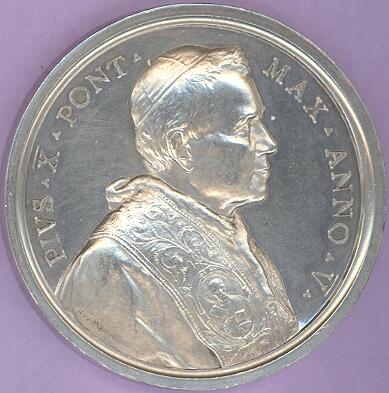
|
AG Obv.: PIVS • X • PONT • | MAX • ANNO • V • (on the shoulder of the bust:) BIANCHI Bust of the Pope, r., wearing zucchetto, mozzetta and stole. |
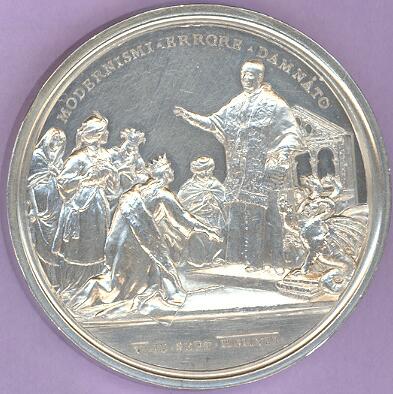 |
Rev.:
|
The medal commemorates the papal Encyclical Pascendi gregis, issued on September 8, 1907.
"Modernism" was a 'system' of theological, philosophical, and social 'errors' invented by the Vatican to define all that was hateful in the Renaissance, Enlightment,
and post-Napoleonic secularism; it looked back to the Syllabus of Errors (1864) of Pius IX for its inspiration, as seen in the Encyclical Lamentabili sane of July 3, 1907. The event initiated a period of persecution
of liberal Catholic intellectuals. See Paul Sabatier, Modernism. The Jowett Lectures, 1908 (New York 1908) [with translations of the encyclicals]. Malachy Martin, The Jesuits (New York 1987), chapter 12.
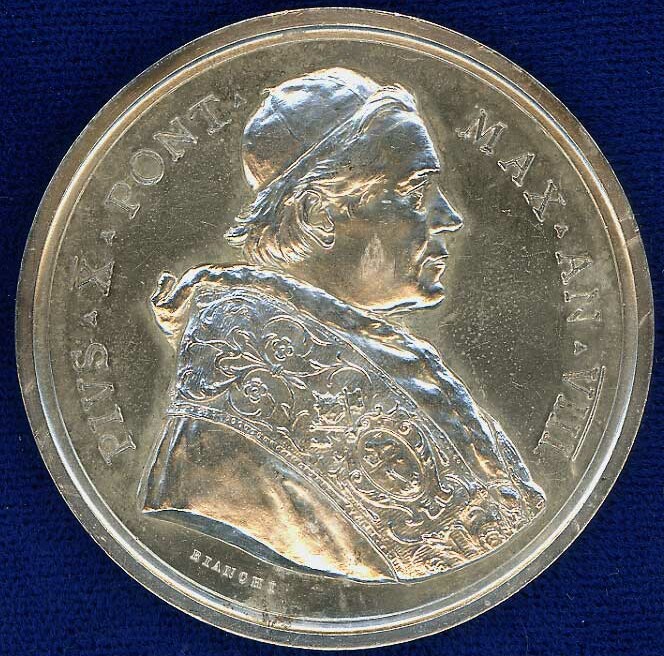
|
AG Obv.: PIVS • X • PONT • | MAX • ANNO • VIII • (belowf the bust:) BIANCHI Bust of the Pope, r., wearing zucchetto, mozzetta and stole. |
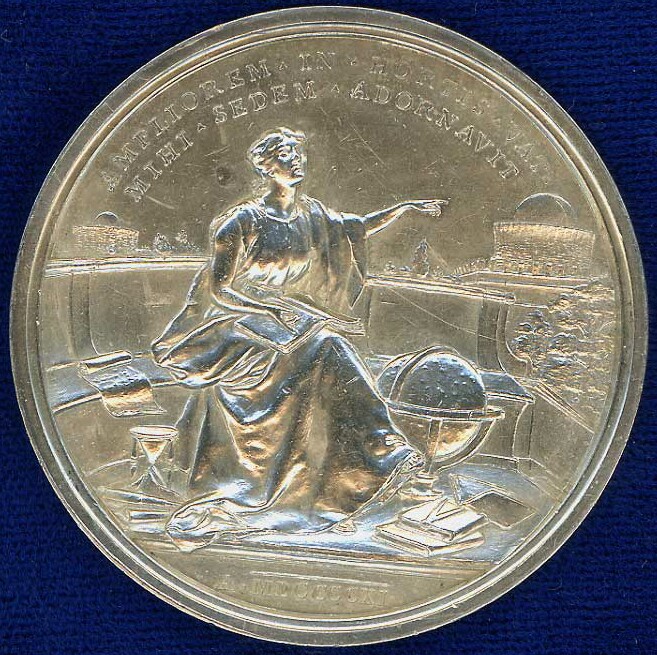 |
Rev.:
• MDCCCCXI •
The Muse of Astronomy, seated on a garden bench, books in her lap, on the bench, a celestial globe, telescopes, an hourglass, and books at her feet. She points at the new building at right, built into a tower of the Leonine Wall of the Vatican. |
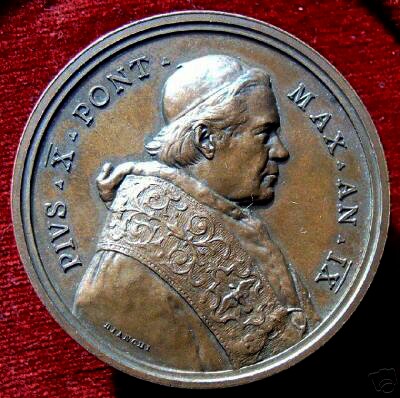
|
AE Obv.: PIVS • X • PONT • | MAX • AN • IX (on the shoulder of the bust:) BIANCHI Bust of the Pope, r., wearing zucchetto, mozzetta and stole. |

|
Rev.: STVDIIS • SCRIPTVRAE • SACRAE | PROVEHENDIS (in exergue:) MCMXII Moses, at left, seated, holding the Ten Commandments [representing the Old Testament]; St. Peter, at right, standing, holding in his left hand, the Keys of the Kingdom [representing the New Testament]. In the background, a building in Renaissance classical revival style, the residence of the Pontifical Biblical Institute . The Pontifical Biblical Institute was founded by Pius X in 1909.] |
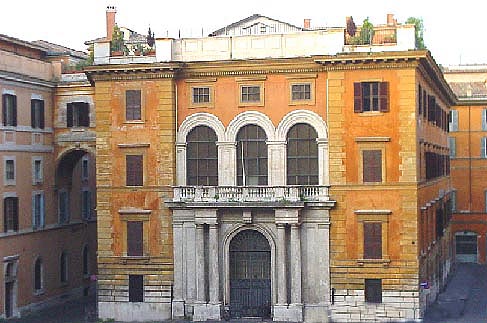
© 2008 John Paul Adams, CSUN
john.p.adams@csun.edu